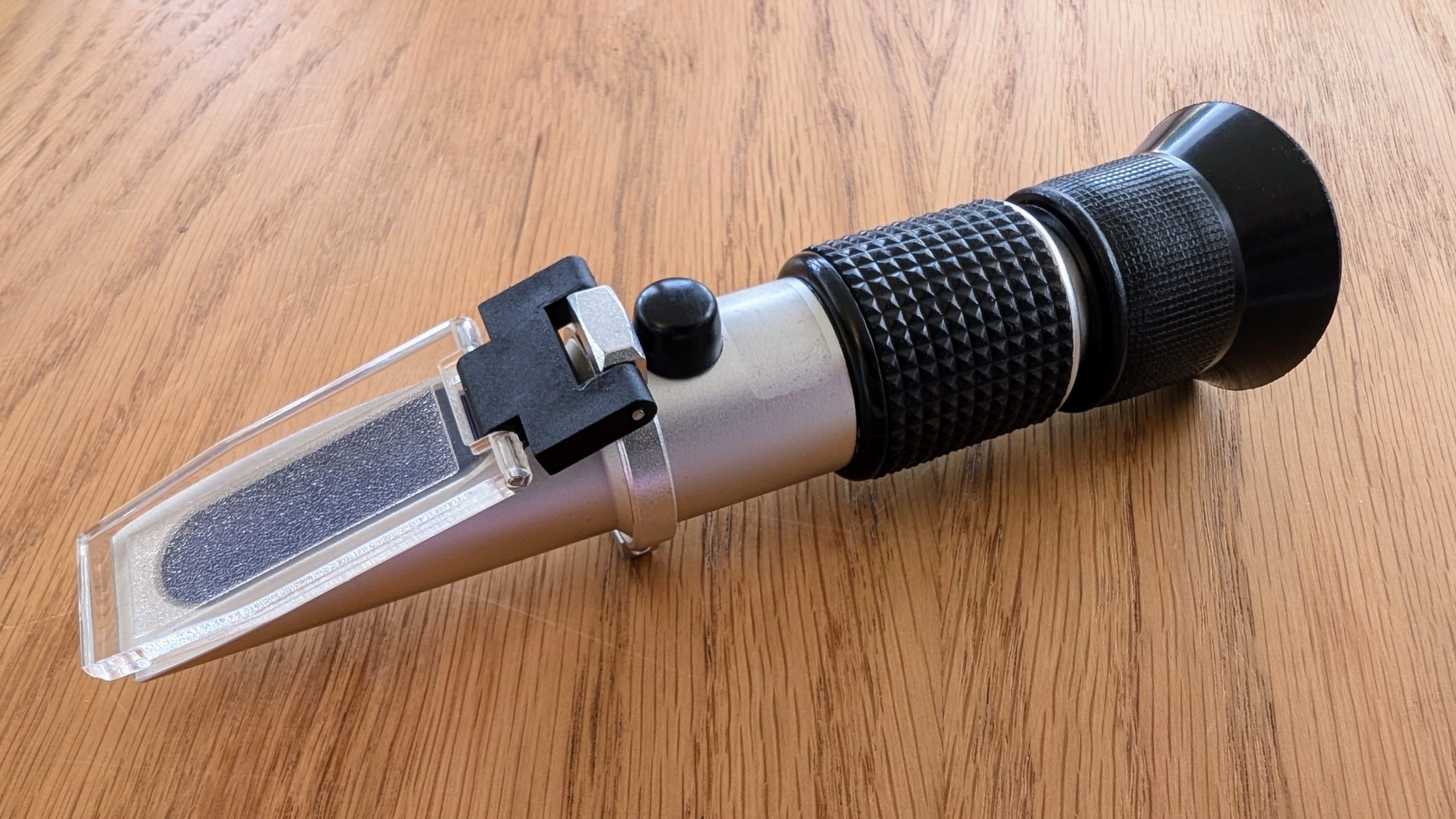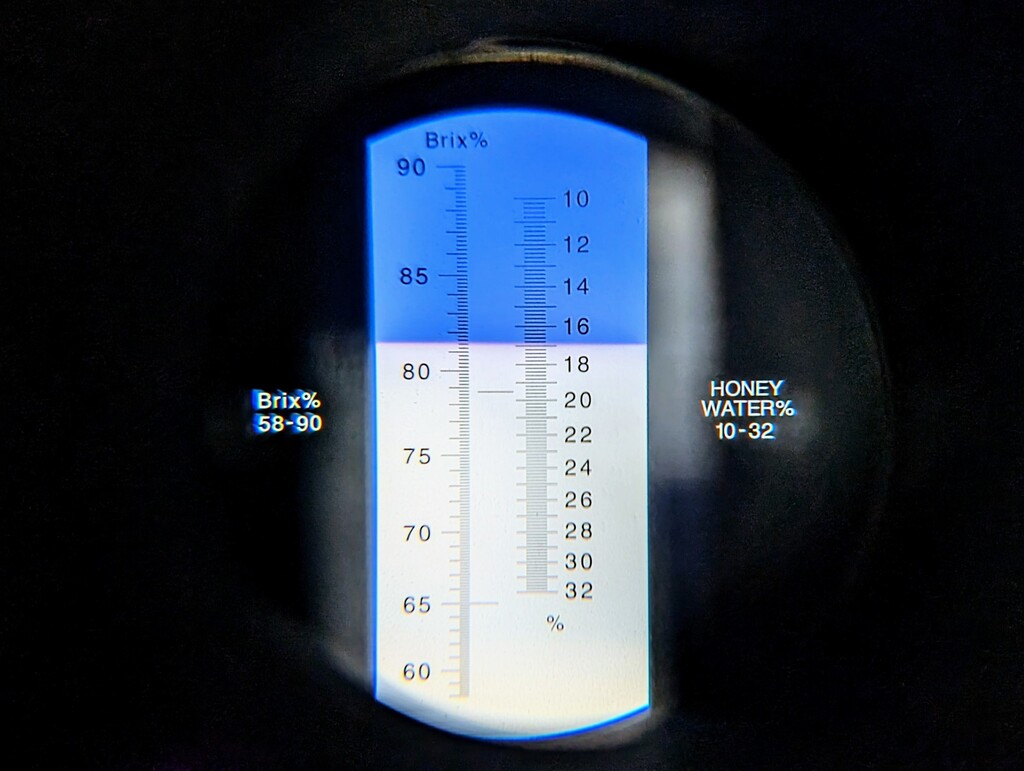
This handy little tool measures how much light bends (refracts) when passing though a small sample of honey which is placed under the slide at the front. The reading through the eyepiece then indicates the moisture content of the honey.
In this instance the honey is a very healthy 16.9%:

This matters because too much water in the honey can allow yeasts to develop, leading to fermentation. As you would want to happen in wine, beer, mead etc making but in a jar of honey this leads to spoiling1.
The generally accepted guidelines are:
- <17% – no fermentation will occur.
- 18% – small chance of fermentation but only if there are large amounts of yeast present.
- 19% – there is a good chance of fermentation, eventually.
- 20% – will almost certainly ferment, a question of when, not if.
Honey should be under 20% for legal sale in the UK but timescales for fermentation will still vary greatly based on the contents of the honey and the storage conditions.
- You can tell when honey has fermented by the ‘acrid’ smell, it may also bubble slightly, causing the lid to dome or honey to leak out the top of the jar. Best not be tempted to try it, the alcohols produce are not likely to be pleasant or do you any good… The best solution is just to eat your honey as quickly as you can after purchasing! 😉 ↩︎
